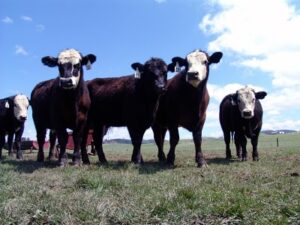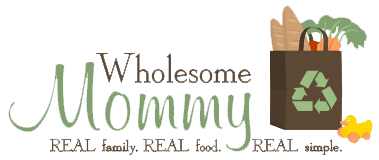As promised, I am back on schedule with my $65 a week budget. So far, this is how I’ve been sticking to my budget and not running all over town blowing my savings in gas:
- Every other week I shop at Earth Fare on Wednesday afternoons after work (Each week I work at the school on Thursdays and Fridays and every other Wednesday. Earth Fare is much closer to my work than my home so my mom and I carpool and go together after work on Wednesdays). On these weeks I purchase mostly organic produce (from the “dirty dozen” list, meat, dairy, and sometimes a loaf of bread (I just can’t pass up Rudi’s Bakery Oat and Nut bread – delicious!), and sometimes some cheddar bunnies or other snack for Judah.
- In the in-between weeks, I either make a trip to Ingles or Walmart to pick up conventional groceries (canned goods, frozen veggies, produce on the “clean fifteen” list, baking ingredients, and other household items). If I’m out of milk, eggs, yogurt, or green beans I’ll go to Ingles because they have organic but Walmart does not in my area.
Some weeks I buy less meat and more dairy and alternate weeks vice versa. It usually works out where I have enough of one to carry over for the following weeks to do it this in this way – in other words, it comes out in the wash. I won’t kid you though, it gets tough and choices have to be made – but as you can see from my “Menu Plan Monday” posts – we’re eating well! So, it has been a good exercise for me … old dogs can learn new tricks! LOL. This frugal mama is still learning to be more and more frugal every day – but maybe not in the conventional ways.
We use up EVERYTHING. We try not to waste ANYTHING. That means cutting my own whole chickens (to save money – it is cheaper to buy this way) and using the cuts we don’t eat and the bones and carcass to make my own (delicious might I add) chicken stock. It isn’t as hard as it sounds!
I’ll post more about how I did last week and this week on my grocery budget (IE: what we bought and what coupons we used) next Monday – but today, as promised, I’m going to share what I have learned so far about choosing beef for my family.

“Organic, Grass-fed, Grain finished, What?”
:: Grass-fed
Beef from cattle that have eaten only grass or forage throughout their lives, however some producers do call their beef grass fed but then actually finish the animals on grain for the last 90 to 160 days before slaughter.
Why is “grass-fed” important?
Ruminating animals (animals with a special digestive system of four stomachs, including cattle and elk) are not designed to eat large quantities of grain, especially as a primary food source. When fed a high grain diet, the micro-organisms that break down the food in the ruminant’s digestive system shift to those favoring a more acidic environment. As the biochemistry of the digestive system transforms, so do the affected tissues (meat).
Research indicates that the tissue changes result in a substantial decrease in the ratio of Omega 3 to Omega 6 in the meat, as well as a decrease in total CLA levels.
Besides affecting the meat – which in turn you eat, it also affects the cows themselves. Eating large quantities of corn can make the cows sick. “They can get bloat and/or acidosis (the rumen of a cow is neutral but corn renders it acidic, causing the cow to get a kind of bovine heartburn that in some cases can kill the animal – but usually just making it sick). Acidosis can lead to diarrhea, ulcers, bloat, amenities, liver disease, and a general weakening of the immune system,” (Pollan, 78).
So, to me the solution seemed simple, eat “grass-fed” beef instead of grain-fed (or conventional) beef. Seemed logical – cows eating grass (as God designed them) would be healthier thus making me healthier. Then, I kept reading and learned it wasn’t quite so simple!
:: Grain-finished vs. Grass-finished
As I mentioned before producers of “grass-fed” beef can actually finish their cows on grain for the last 90 to 160 days. Grass-finished is just exactly what it sounds like – cows that have been fed and finished on grass.
Most cows are grain finished – even grass-fed beef. All conventional beef is grain fed and grain finished unless otherwise stated. Grain finishing became the industry standard, because it enabled animals to fatten and mature earlier, thus making it much cheaper to “finish” them to a desired weight, and because of the changes that grain feeding causes in the tissues, the meat from almost any animal can be made tender through grain finishing.
During those few months of grain finishing the levels of important nutrients like CLA and Omega 3 decrease dramatically in the beef animal’s tissues. It is in the finishing process that those levels and ratios drastically decline because of the grain feeding, and that is why it’s so important to make sure that the beef you eat is not only grass fed, but grass finished.
Most cattle ranchers do not want to grass finish a cow because it takes so much longer for a cow to reach slaughter weight. Grain finishing a cow fattens it up much quicker – meaning more turnover and more money for the rancher.
:: Raised with No Hormones or Antibiotics
This is another important factor for me – I don’t want the antibiotics or the hormones in my beef or my body. Often the beef that is raised in feed lots receives growth hormones from an hormonal implant device placed in their ear. Be sure that when you buy grass fed beef it is from pastured cattle, free of any added hormones.
Antibiotics are really two separate issues: low level feed antibiotics and administered antibiotics. Often feedlot animals are fed a daily dose of low level antibiotics to ward off infectious diseases that arise in that level of confinement. Many scientists postulate that such practices create “super-bug” strains of pathogens which are resistant to our modern antibiotics. The other issue is if an animal was treated with antibiotics, at some point in its life; any remaining residue from the drugs is usually gone within a few weeks or months time.
:: Organic Beef
Organic beef can be grass-fed, grain-fed, grain-finished, or grass-finished. The only distinction with organic beef is that if the cow is given grain, the feed grain is certified organic. However, even though the grain is organic, it still has the same effect on the beef of causing a decline in essential, vitality generating nutrients. Organic also means no antibiotics and no hormones – which is also important.
one more thing,
:: Pastured Beef
You want to obtain grass-fed and finished beef that has been pastured all of its life and not kept in confinement. It’s possible that a producer could keep cattle in confinement and feed them grass hay and still be able to call them grass finished for now since there is currently no standardized definition of grass-fed or finished beef. So you always want to make sure that your grass-fed beef has been pastured all of its life too.
How do you find pastured, grass-fed, grass-finished beef?
(Wow, that is a mouth full!) But, after all, I’ve read this is what my family is choosing to purchase from now on. It seems to be the health benefits far outweigh the cost. As of now, the only way I can find this sort of beef is direct from a farmer. Since there isn’t a standard definition for grass-fed or grass-finished beef (yet- Currently the USDA is in the process of formulating definitions of grass-fed and grass-finished beef) your best bet is to buy local, from a farmer you trust. It took a little research on my end but by talking to friends and relatives we were able to locate a local farmer who raises pastured cattle. He normal grass-feeds them and grain-finishes them but after talking to him and promising the purchase of a whole cow, he was willing to grass finish a cow for us.
Which leads me to this:
Buying a whole cow is a LOT of beef. You’ll need ample freezer space and the cash flow to purchase your meat all at once. However, if you are able to purchase the whole cow (yourself or with others) you’ll receive a much lower price. (Think steak and roasts at ground beef prices). Which means you’ll save money over time and drastically reduce your grocery bill.
Here are some facts to help you figure out how much beef you are getting:
- If you’re buying a whole cow – the average “hanging weight” is 600 lbs.
- Hanging weight is the weight of the cow before it is slaughtered – the actual weight of the animal.
- Most farmers/ranchers will sell it to you based on the hanging weight. In my case we’ll be receiving a 600-700 lb heifer at $2.50 per lb.
- You’ll pay for the hanging weight (in my case 600-700 lbs) but lose at most 25% of the animal in waste (bones, skin, fat, etc).
- Need to know how much freezer space you’ll need? 1 cubit foot of freezer space is needed for each 35 to 40 pounds of cut and wrapped meat (odd shapes require more).
- Beef can be stored in a freezer for 9 to 12 months. Ground beef is better if stored for only 3 – 4 months. (Most meats can be stored longer but you will lose some of the quality).
We’re actually getting an 1/8 (we’re sharing the purchase with 7 other close friends and relatives that are trying to eat better as well). Buying a whole cow together like this we are able to get it for $2.50 per pound (nearly as cheap as conventional ground beef!) and we’ll receive about 67-87 lbs of meat. (The price could actually vary from $2.29 to $3.35 per pound for the actual amount of beef I will receive). I’ve priced organic ground beef locally at the grocery store for $3.58 per pound (at the lowest price) and as mentioned above organic doesn’t necessarily mean grass fed or grass finished. Not to mention I’ll be getting a lower price and I’ll be receiving varied cuts of beef – not just ground beef. So, purchasing locally not only gets me a better product but a better price.
I’ve been reading “The Omnivore’s Dilemma: A Natural History of Four Meals” and “In Defense of Food: An Eater’s Manifesto
” both by Micheal Pollan and I highly recommend them if you are muddling through how to feed your family wholesomely like me! Much of what I’ve learned I can attribute to these books because I read it there or it led me to do a little more digging elsewhere. Both books are fairly cheap at Amazon (links above). I think right now they are $8-$9 a piece.
Also, to read more about this topic visit the page HERE (grass-fed-beef 101) where I got most of the information for this post.








